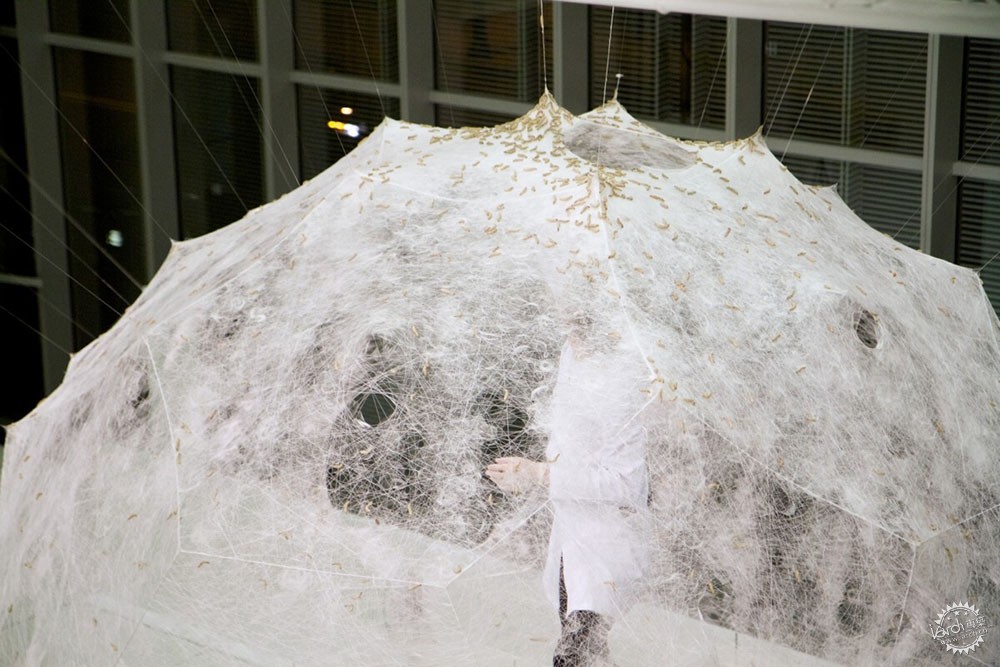
Silk Pavilion. Image © Steven Keating
通用于自然、技术、艺术和建筑中的材料
Materials at the Intersection of Nature, Technology, Art and Architecture
由专筑网邢子,小R编译
俗称荷花的水生物种Nelumbo nucifera有这样一个特点:它的叶子是自洁的,或者说是超疏水的。这意味着没有污垢或水的颗粒附着在它的叶子上,这在植物通常生长的潮湿和泥泞环境中显得特别。然而,这种效果并不是来自于完全光滑的表面或叶片上的树脂层。事实上,荷花充满了微小的褶皱,这些褶皱减少了接触面的面积,并排斥所有试图附着在其上的颗粒。纳米技术专家对荷花效应进行了研究,以便将这种相同的效应应用到产品中,如表面、涂料、织物和瓷砖,使其能够轻易地自我清洁。尽管这看起来微不足道,但当人们想到用于清洁摩天大楼玻璃的资源,甚至想到由于太阳能电池板上的灰尘而导致的光伏发电量的减少,我们就可以感受到疏水表面的无限可能性。
大自然在数十亿年的时间里已经创造出了适应性的解决方案,随着新技术应用于建筑业等领域的需求,这些解决方案开始为人们所认知理解。当科学家、生物学家、工程师、建筑师和其他专业人士合作,以共情和尊重的视角,专注于理解自然的各个方面时,其结果会令人意想不到。
Popularly known as the lotus, the aquatic species Nelumbo nucifera has a useful particularity. Its leaves are self-cleaning, or ultra-hydrophobic. This means that no particles of dirt or water adhere to its leaf, which is especially useful in the humid and muddy environments where the plant typically grows. However, this effect does not derive from a perfectly smooth surface or a resinous layer on the leaves. The lotus is, in fact, full of tiny folds that reduce the area of the contact surface and repel all the particles that try to adhere there. The lotus effect has been studied by nanotechnologists in order to apply this same effect to products, such as surfaces, paints, fabrics, and tiles that can easily clean themselves. As trivial as this may seem, when we think of the resources applied to cleaning skyscraper glass or even of the reduction in photovoltaic energy generation due to dust on solar panels, we can get a sense of the infinite possibilities that hydrophobic surfaces could represent.
Nature, over billions of years, has developed adaptive solutions that are beginning to be understood by us with new technologies applied to the needs of areas such as the construction industry. When professionals such as scientists, biologists, engineers, architects, and others join forces and focus on understanding aspects of nature, with an empathetic and respectful view, the results can be impressive.
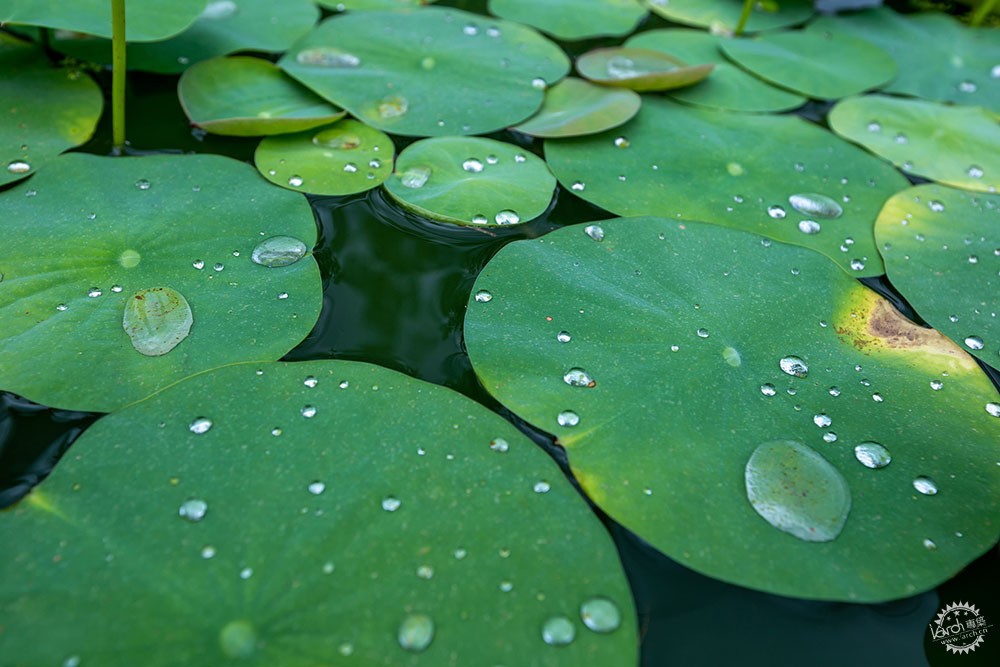
© Krizde (shutterstock)
另一个类似的例子来自于海洋,美国海军研究办公室指派了一位科学家寻找策略,以减少码头上常用的有毒且昂贵的防污漆的使用,这些防污漆旨在防止海藻的扩散。该方案的灵感来自于鲨鱼的皮肤,当检查鲨鱼的皮肤齿状物时,研究人员发现它们以钻石的方式排列,这种方式阻止了微生物的定居,微生物并没有死亡,它们只是因为这种不舒服的几何形状而没有兴趣留在表面。工程师们根据这一推理开发了Sharklet技术,所开发的人工图案非常小——大约3微米高,2微米宽,用肉眼看不到,用手摸不到,但它就在那里,保护表面免受细菌和其他微生物的侵害。研究甚至表明,这种表面可以防止致病细菌的生长和传播,包括令人恐惧的超级细菌金黄色葡萄球菌,它们对常用于治疗葡萄球菌感染的抗生素具有抗药性,并且会导致严重的医院感染。
Another similar example comes from the oceans. The US Naval Research Office has asked a scientist to look for strategies to reduce the use of toxic and expensive antifouling paints commonly used on docks, designed to prevent algae proliferation. The inspiration for the solution came from shark skin. When examining sharks' dermal denticles, researchers found that they were arranged in a diamond pattern, in a way that discouraged microorganisms from settling down. The microorganisms do not die; they simply have no interest in remaining on the surface, due to the uncomfortable geometry. Engineers developed the technology Sharklet from this reasoning. The developed artificial pattern is extremely small—about 3 microns high and 2 microns wide—and cannot be seen with the naked eye or felt by touch, but it is there, protecting the surface from against bacteria and other microorganisms. Studies have even suggested that such surfaces may prevent the growth and spread of disease-causing bacteria, including the feared superbug Staphylococcus aureus, which are resistant to antibiotics commonly used to treat staph infections and are known to cause serious hospital infections.
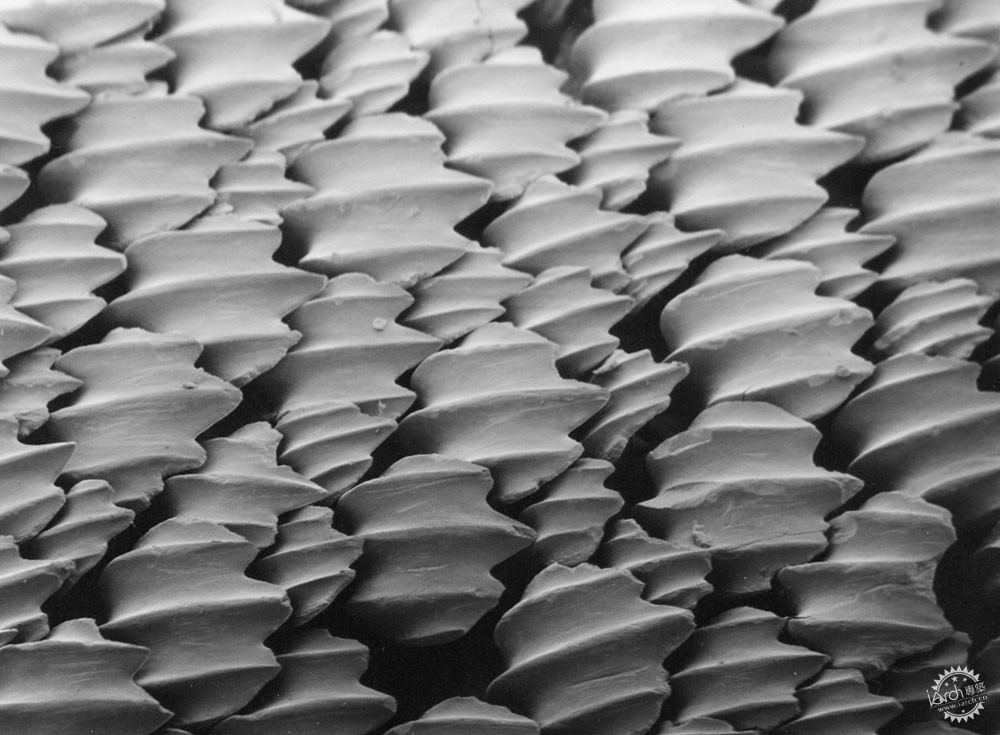
Pascal Deynat/Odontobase, CC BY-SA 3.0, via Wikimedia Commons. ImageAnálise microscópica da pele do tubarão
这两个案例是仿生学领域的典范,仿生学不过是受自然启发的创新。比起寻求复制自然形式,仿生学更多的是寻求理解和模仿生物的做法和策略来创造和设计产品和工艺,以帮助解决设计需求。仿生材料是由人类制造的模仿自然的合成材料,或遵循源自自然的设计主题。最重要的是,它是一种多学科的方法。正如Janine Benyus所指出的,它包含了一种面向自然的观点,将向自然学习作为解决人类问题的一种方式。在Benyus的《生物仿生学:受自然启发的创新》一书发行后,生物仿生学这个术语得到了普及。
These two cases exemplify the field of biomimetics, which is nothing more than innovation inspired by nature. More than seeking to reproduce a natural form, biomimicry seeks to understand and imitate biological practices and strategies to create and design products and processes that can help solve our design needs. Biomimetic materials are synthetic materials (made by man) that imitate natural ones or that follow a design motif derived from nature. Above all, it is a multidisciplinary approach. It embraces a perspective toward nature that learns from nature as a way to solve human problems, as Janine Benyus points out. The term biomimicry was popularized after the release of Benyus' book Biomimicry: Innovation Inspired by Nature.
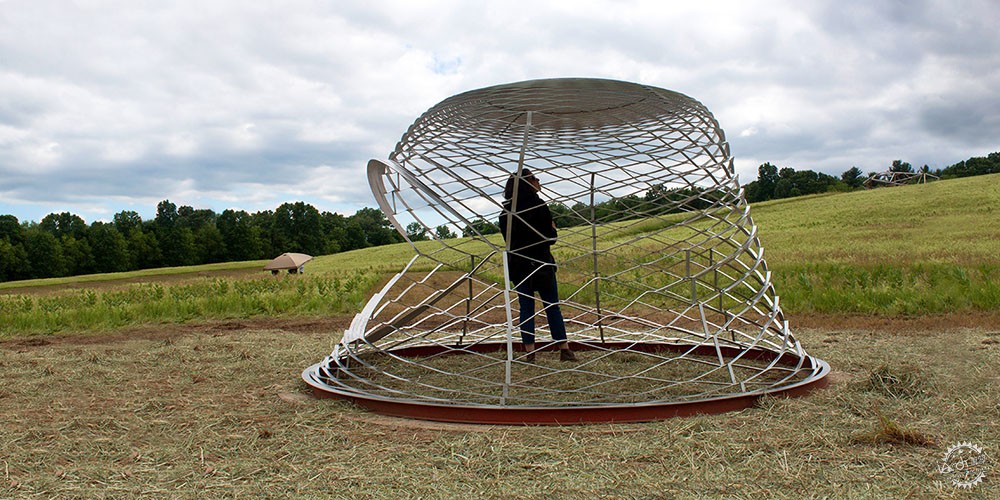
X Tower. Image Cortesia de Haresh Lalvani
将自己限制在特定的知识领域,为人们的工作寻求灵感,是很常见和自然的,但这也可能最终在学科和专业之间造成障碍。这是否是人们的教学法、资本主义的遗留,或者是人类固有的行为,本文不得而知。但是当谈到打破建筑的障碍时,我想到的一个名字是Buckminster Fuller(1895-1983),他是所谓的"全面预见性设计科学"的倡导者,并创造了"设计科学革命 "一词。他的观念的主要前提是,如果我们要作为一个物种生存和发展,自然界的全能和现有秩序应该指导所有的人类项目。Fuller对世界的许多担忧已经成为现实,而他的一些想法在他去世近40年后已经被先进的技术所实现和检验。
It is common and natural to restrict ourselves to specific areas of knowledge to seek inspiration for our work. But it can also end up creating barriers between disciplines and professions. Whether this is a legacy of our pedagogies, of capitalism, or whether it is a behavior inherent to human beings, this article does not pretend to have an answer. But when it comes to breaking down the barriers of architecture, a name that comes to mind is that of Buckminster Fuller (1895-1983). He was an advocate of what he called “Comprehensive Anticipatory Design Science” and coined the term “design science revolution.” His main premise was that the omnipotent and existing order of nature should guide all human projects, if we are to survive and thrive as a species. Many of Fuller's concerns about the world have materialized, while several of his ideas have been made possible and tested by advanced technology almost 40 years after his death.

© meunierd (shutterstock)
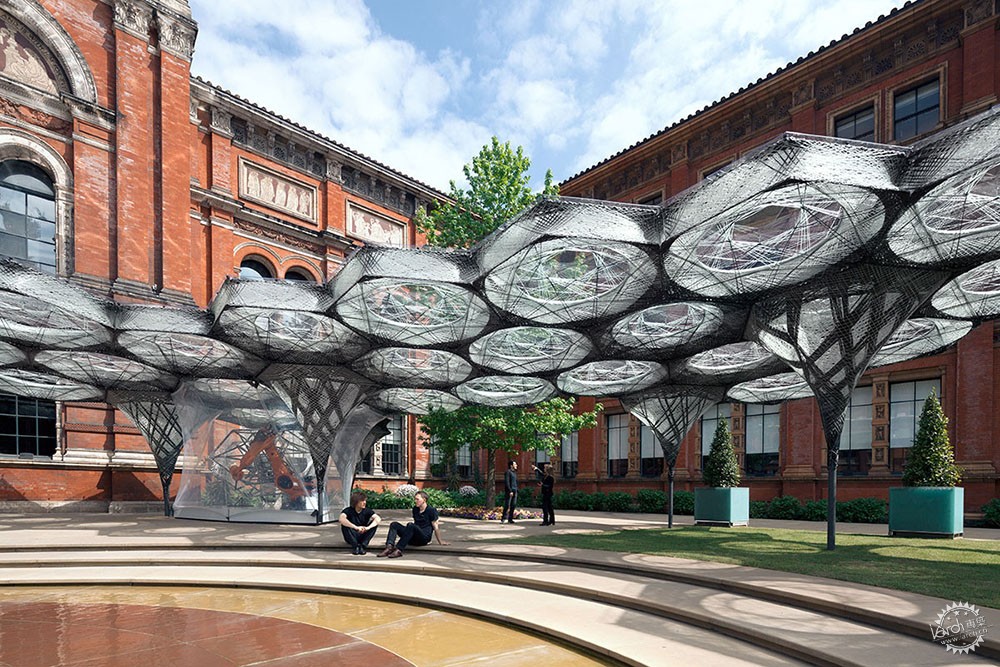
Elytra Filament Pavilion. Image © NAARO via the V&A
事实上,有反应的、有弹性的或自我纠正的材料不再是科幻小说中的发明。一个例子是基于细菌的自我修复混凝土,它在出现裂缝时能自我再生。我们知道水的渗入对钢筋混凝土结构的损害有多大,特别是对混凝土钢筋的氧化作用。但是,如果水在进入这块时,可以成为修复解决的一部分呢?这个推理很有趣:与传统的混凝土混合物一起,细菌孢子(Bacilus pseudofirmus)被包含在微小的透水胶囊中。它们将保持惰性,不会影响结构的完整性。当裂缝形成和水渗入混凝土时,这种情况就会改变。一旦水接触到胶囊,孢子就会被激活,这些细菌将产生方解石,作为一种生物水泥,随着细菌的移动而填充混凝土的裂缝。这种新材料使用了生物学和工程学的概念,目的是一种可以自我再生的解决方案。这种解决方案的广泛使用仍然受到其高成本的限制,但原型已经在难以进入的地下结构中实现。为了在施工中安全地使用细菌,与生物学家和科学家的合作是必不可少的。当然,用这种材料工作不像在超市买一包酵母,细菌必须得到适当的处理,这需要大量的人力资源、技术和知识——也就是说,需要许多学科坐在同一张桌子上探讨开发同一个项目。
In fact, responsive, resilient, or self-correcting materials are no longer science fiction inventions. An example is the Bacteria-based self-healing concrete, which self-regenerates when cracks appear. We know how much water infiltration damages reinforced concrete structures, especially through the oxidation of concrete reinforcement. But what if water, when entering the piece, could be part of the solution? The reasoning is interesting: along with the traditional mixture of the concrete, bacterial spores (Bacilus pseudofirmus) are included in tiny water-permeable capsules. They will remain inert and will not affect the integrity of the structure. This changes when a crack forms and water seeps into the concrete. As soon as the water touches the capsules, the spores are activated and these bacteria will produce calcite, which acts as a kind of biocement, filling the cracks in the concrete as the bacteria move. The new material uses biology and engineering concepts and aims at a solution that can regenerate itself. The widespread use of this solution is still limited by its high cost, but prototypes have already been built in underground structures that are difficult to access. To safely work with bacteria during construction, collaboration with biologists and scientists is essential. Of course, working with this material is not like buying a package of yeast at the supermarket. Bacteria must be processed properly and this requires an enormous amount of human resources, technologies, and knowledge—that is, many disciplines sitting at the same table to develop the same project.
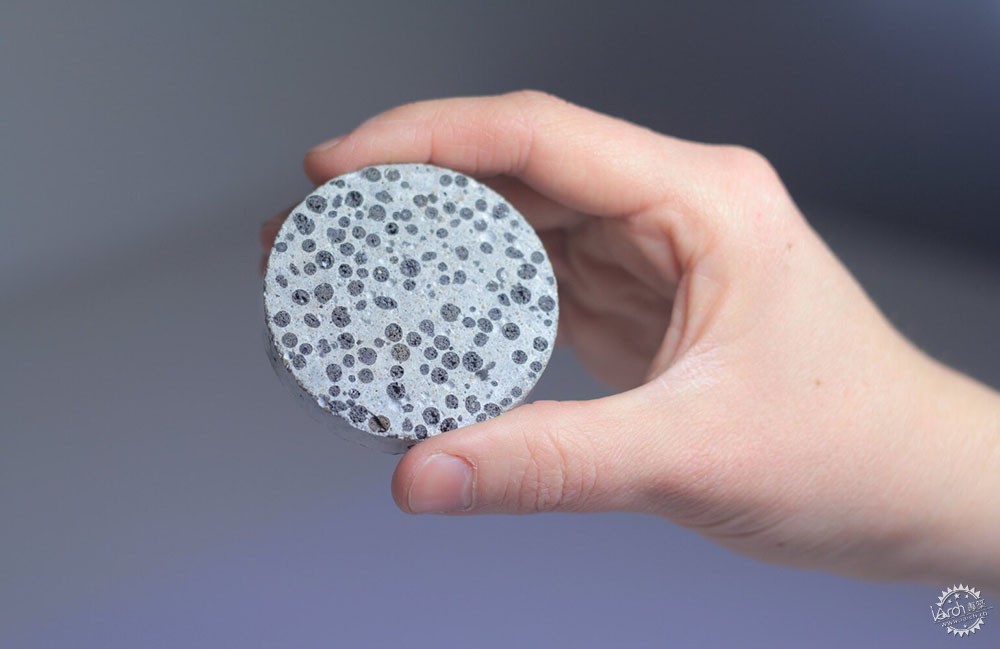
The aggregate of this concrete contains bacterial spores that fill in any cracks in the material. Image © UCL, Institute of Making/Robert Eagle via flickr
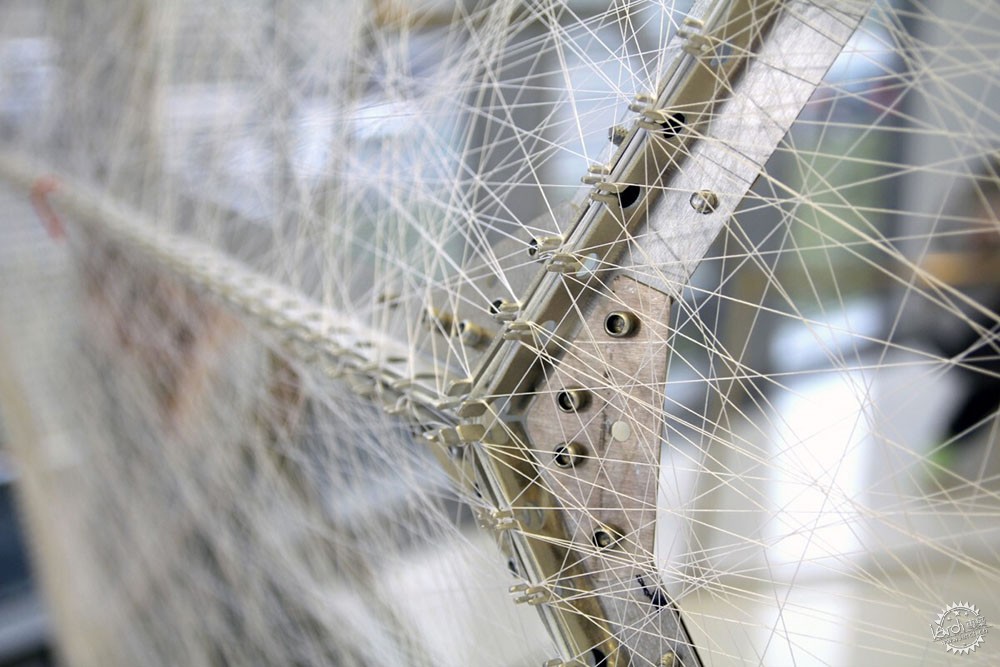
Silk Pavilion. Image © Markus Kayser
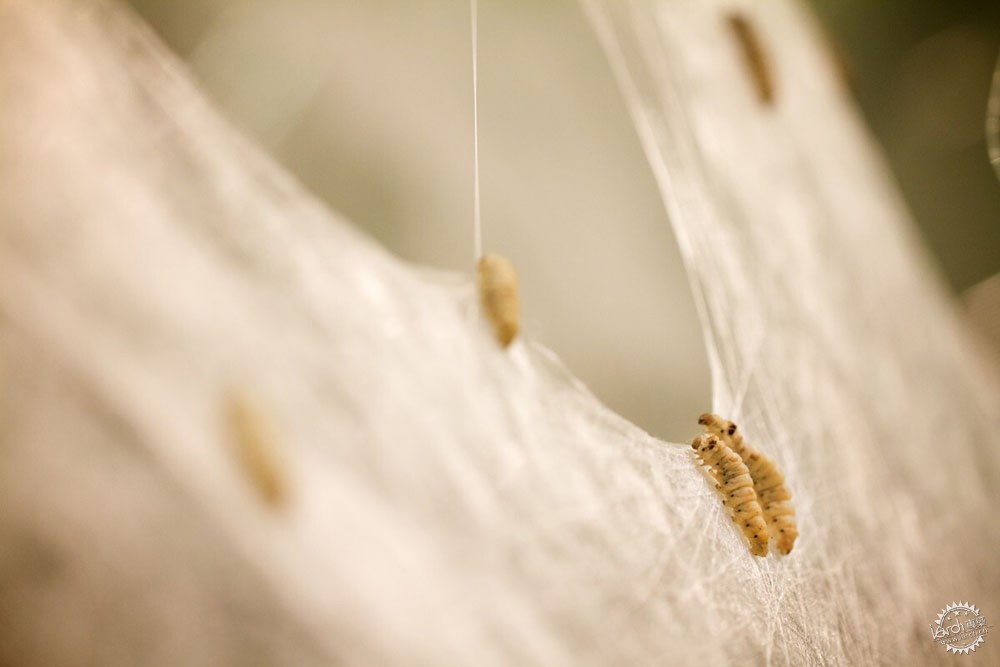
Silk Pavilion. Image © Steven Keating
然而,我们的想象力很难超越我们已经拥有的资源,以达到真正的创造性。以至于到目前为止,本文只引用了使用已知材料的解决方案,这些解决方案并没有重新定义一直以来的建筑方式。麻省理工学院的教授和媒介物质小组的协调人Neri Oxman指出,"自从工业革命以来,设计的世界一直被制造业和大规模生产的严谨性所支配。装配线决定了一个由零件组成的世界,框住了设计师和建筑师的想象力,他们被训练成将物体视为具有不同功能的零件"。这种生产方式与自然过程形成了鲜明的对比,在自然过程中,类似的细胞通过转化和适应来完成不同的功能,结构在不同的尺度上针对多种功能进行优化:结构负荷、环境压力、空间限制等等。自然结构不是组装零件,而是生长。我们的材料也可以这样吗?
However, it is difficult for our imagination to move past the repertoire we already have to arrive at something really creative. So much so that, so far in this article, only solutions using known materials have been cited, which do not go so far as to redefine the way constructions have always been made. Neri Oxman, professor at MIT and coordinator of the Mediated Matter Group, points out that “since the industrial revolution, the world of design has been dominated by the rigor of manufacturing and mass production. Assembly lines dictated a world made of parts, framing the imagination of designers and architects, who were trained to think about their objects as a result of parts with different functions.” This means of production contrasts the natural processes, where similar cells transform and adapt to perform different functions, and structures are optimized for a multiplicity of functions at various scales: structural load, environmental pressures, spatial restrictions, and so on. Instead of assembling parts, natural structures grow. Could our materials be like that too?
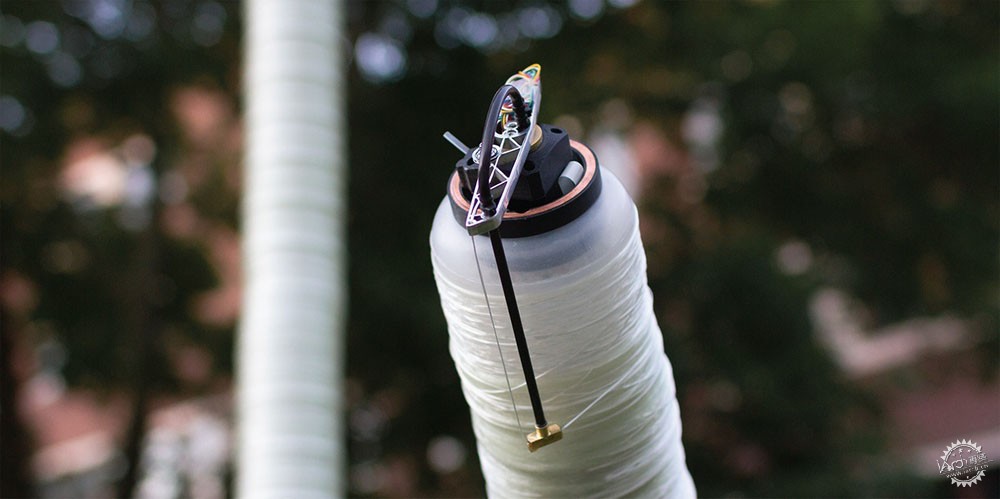
Fiberbots. Image © The Mediated Matter
材料生态学的概念是一种科学方法,它探索、告知和表达了建筑环境、技术和自然之间的相互关系。媒介物质小组致力于研究数字制造技术如何在材料、物理、数字之间的交叉点与生物互动。该小组开发的项目包括玻璃打印机、由蚕建造的亭子、艺术作品以及可以取代塑料的材料,展示了自然、技术和艺术相结合可能产生的无限可能性。
The concept of Material Ecology is a scientific approach that explores, informs, and expresses the interrelationships between the built environment, technology, and nature. The Mediated Matter Group works on how digital manufacturing technology can interact with the biological at the intersection between the material, physical, digital. The group has developed projects including glass printers, pavilions built by silkworms, pieces of art, and materials that could replace plastic, demonstrating the infinite possibilities that may come from the combination of nature, technology, and art.
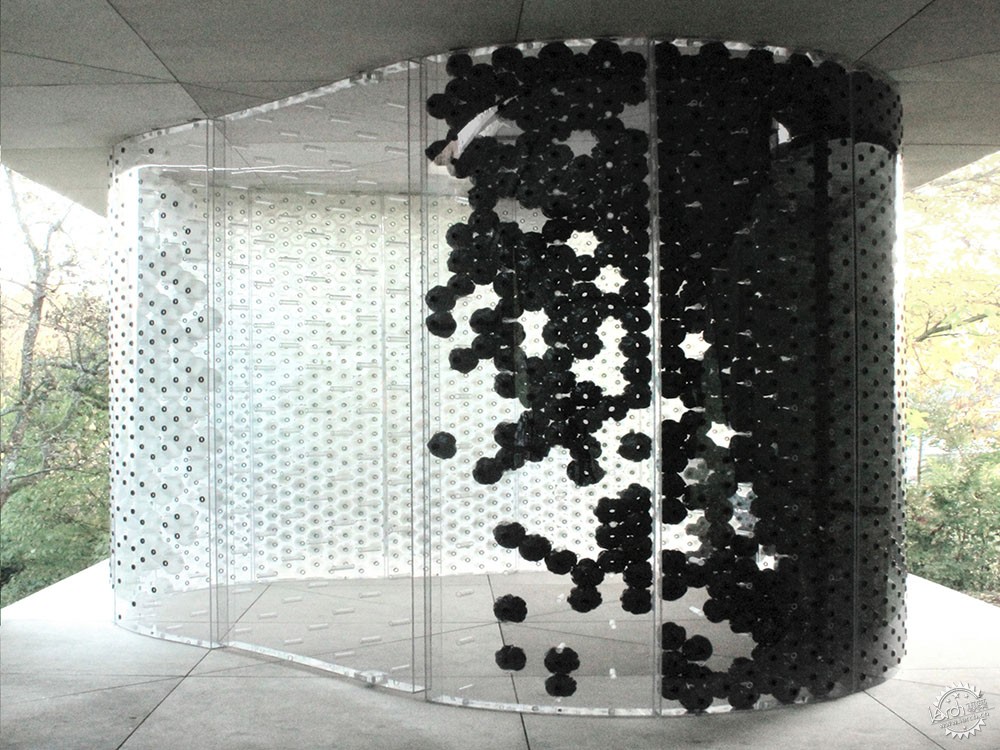
Cortesia de The Breathing Skins Project
重新思考我们建设世界的方式对健康的未来至关重要,依靠自然似乎是一条合乎逻辑的道路。地球超限日标志着人类在某一年对生态资源和服务的需求将超过地球在该年所能再生的那一天。在2020年,它是在8月22日,换句话说,人类在这一天之前用完了地球一整年可以补充的所有自然资源——包括自然生态系统吸收燃烧化石燃料产生的碳排放的能力。这个日期是通过比较人类每年的消费总量,即生态足迹,和地球当年再生可再生自然资源的能力,即生物能力,来计算的。每年,这个日期都在提前,这让人非常担心。很少有人会否认这个现实:我们在对待地球的方式上走错了路。正如那句名言所说:"精神错乱是希望通过做完全相同的事情来获得不同的结果"。如果问题是全球性的,那么采取多学科的立场对于面对这些问题和寻求有效的结果是至关重要的。
Rethinking the way we are building our world is essential for a healthy future. Leaning on nature seems to be a logical path. Earth Overshoot Day marks the date when humanity's demand for ecological resources and services in a given year will exceed what the Earth can regenerate in that year. In 2020, it fell on August 22. In other words, humanity used all the natural resources that the Earth could replenish for a full year by that date—including the ability of natural ecosystems to absorb carbon emissions from burning fossil fuel. The date is calculated by comparing the total annual consumption of humanity (Ecological Footprint) with the Earth's capacity to regenerate renewable natural resources that year (biocapacity). Each year, that date gets earlier, which is very worrying. Few will object to the reality that we are going the wrong way in how we are treating the planet. As the famous phrase says: "Insanity is wanting different results by doing everything exactly the same." If the problems are global, adopting a multidisciplinary stance is essential to facing these issues and seeking effective results.
|
|
